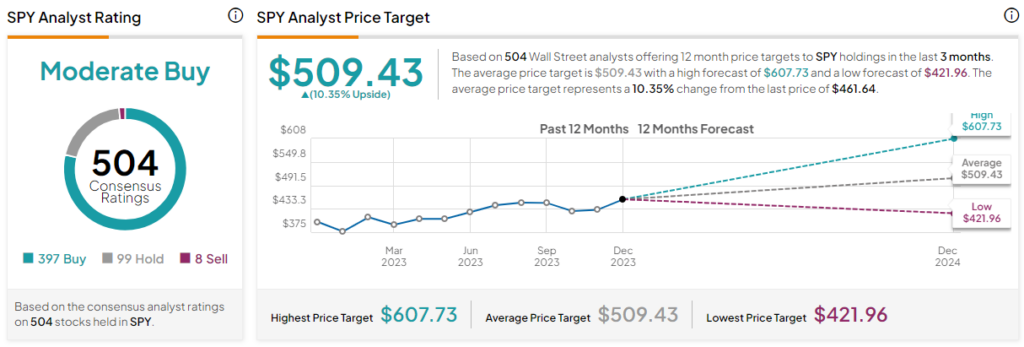The S&P 500 (SPX) is set to finish 2023 with a double-digit gain. Investors naturally wonder what 2024 has in store. Predicting stock market movements is never easy, especially against the backdrop of a presidential election and the likely start of the next Fed easing cycle. In this article, I will examine history to see how the leading U.S. benchmark has performed in similar circumstances.
Claim 50% Off TipRanks Premium and Invest with Confidence
- Unlock hedge-fund level data and powerful investing tools designed to help you make smarter, sharper decisions
- Stay ahead of the market with the latest news and analysis so your portfolio is always positioned for maximum potential
In a nutshell, historical data shows that the S&P 500 is highly likely to continue its bull run into 2024, with the three observed indicators — performance after a double-digit return year, performance during Fed easing, and performance in presidential election years — all pointing to continued gains for the S&P 500.

What to Expect after the Stellar Performance in 2023
Going back to 1928, the S&P 500 has delivered a double-digit percentage return in a stunning 50 years — roughly 52% of the time. As a result, high returns like the ones we experienced in 2023 are not extraordinary. The track record on what follows a double-digit return year is more nuanced but positive overall. Historical records show the following:
- 49% of the time, you should expect another double-digit return year.
- 18% of the time, you should expect a positive year, with returns falling short of the 10% hurdle.
- 33% of the time, you should expect a negative return.
Based on historical returns, for 2024, we can conclude that there is a 2/3 chance the bull market continues and a 1/3 chance of a market correction.
2024 – Presidential Election Year
The U.S. presidential election on November 5, 2024, is also set to be a focus point for market participants. Since 1928, there have been 24 presidential elections in the United States. Historical records for the S&P 500’s performance show the following:
- 50% of the time, the index delivered a double-digit return in a presidential election year.
- 25% of the time, the index had a positive year, with returns falling short of the 10% hurdle.
- 25% of the time, the index had a negative year.
Based on historical returns, for 2024, we can conclude that there is a 75% chance for the bull market to continue and only a 25% possibility of a market correction — better than the odds outlined above.
2024 – The Fed Starts Easing Policy
Looking at the historical developments of the Federal funds rate, the main interest rate set by the Federal Reserve, we observe that since 1955, there have been 29 years in which the Fed reduced the level of the Federal Funds rate from the one set at the beginning of the year. In other words, the Fed was generally easing monetary policy.
Market participants and futures prices imply that the Federal Reserve will embark on a round of rate cuts in 2024, potentially starting the monetary easing process at its March 2024 policy meeting. Historical records show the following:
- 55% of the time, the S&P 500 delivers a double-digit gain during a Fed easing cycle.
- 21% of the time, the index had a positive year, with returns falling short of the 10% hurdle.
- 24% of the time, the index had a negative year.
Of the three historical metrics observed so far, the Fed easing indicator prescribes the highest possibility (76%) of the bull market continuing.
Is the S&P 500 a Buy, According to Analysts?
Turning to Wall Street, the SPDR S&P 500 ETF Trust (NYSEARCA:SPY), which tracks the S&P 500 Index, earns a Moderate Buy consensus rating based on 397 Buys, 99 Holds, and eight Sell ratings. Additionally, SPY stock’s average price target is $509.43, implying 10.35% upside potential.

The Takeaway
History does not repeat itself, but it often rhymes. While no one knows for certain how the S&P 500 will perform in 2024, historical data from the three observed indicators (Fed easing cycles, past presidential elections, and performance after double-digit return years such as 2023) points to further gains to come in 2024.
The odds of another double-digit gain are roughly 49-55%, and lowering the bar to just a positive return results in a 67-76% chance to finish the year in the green. This leaves the least desirable option — a down year — with a possibility of just 24-33%. After reviewing the data, I believe that investors should consider staying invested, allowing their capital to grow.















